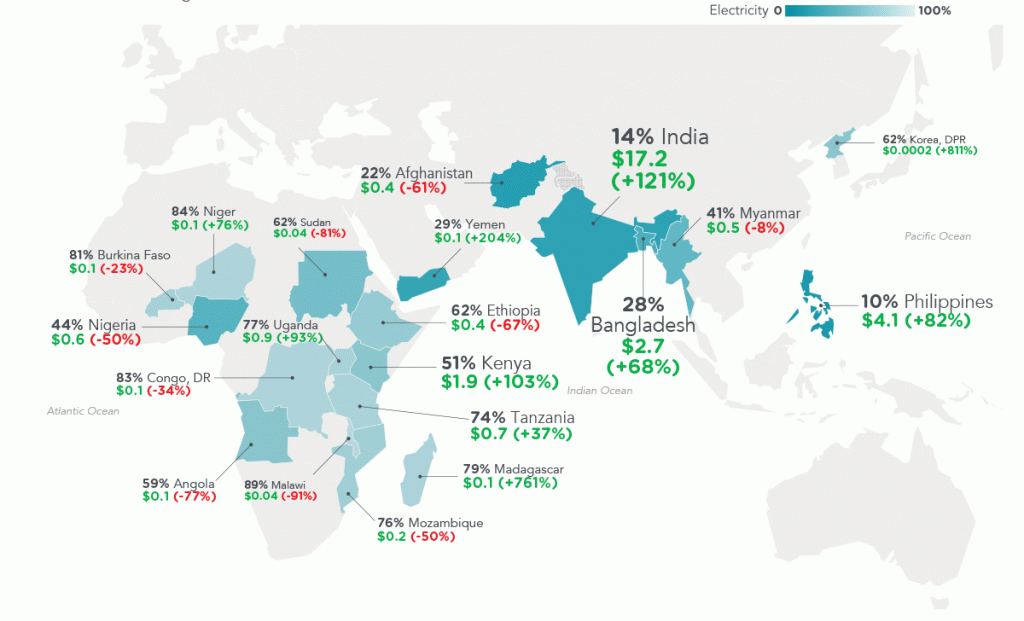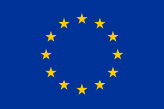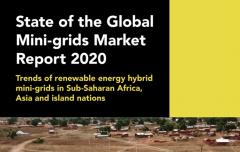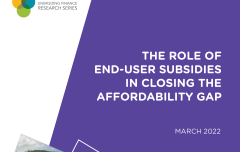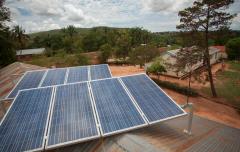Electrification in Uganda
We look at how Uganda is increasing accessibility to sustainable energy solutions for the country, highlighting what can be done with political will and private sector mobilization.
Finance for electricity in 20 high-impact countries averaged USD 30.2 billion per year over 2015-16, a USD 10.8 billion increase from the annual investment in 2013-14. However, this figure remains lower than the required annual investment of USD 52 billion needed to provide universal electricity access by 2030, of which 95% needs to be realized in Sub-Saharan Africa.

